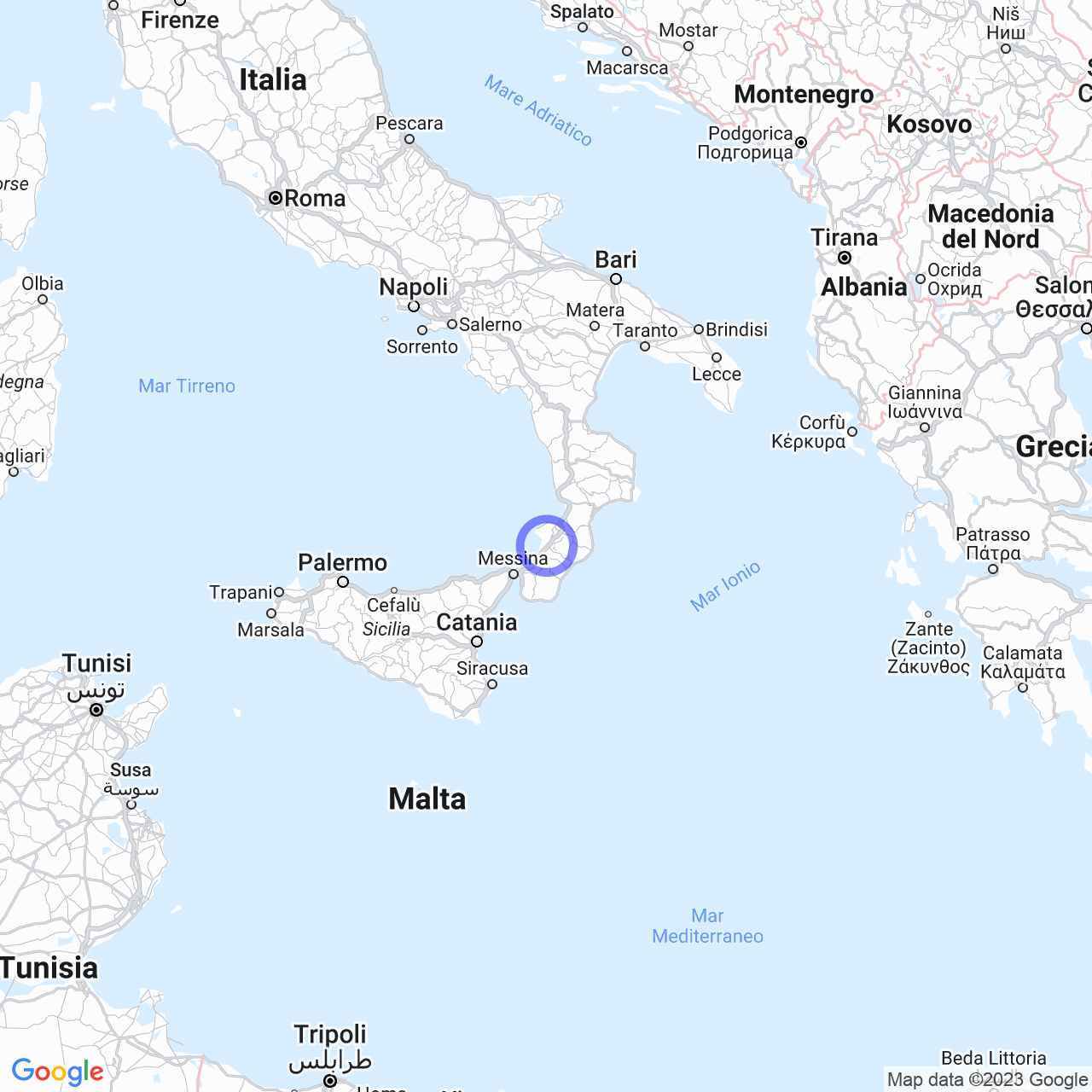Rosarno
Reggio Calabria: a modern city with a millennial history
Reggio Calabria is a city that combines the millenary history of Magna Graecia with the modern layout born after the earthquake of 1908. It is the most populous municipality in Calabria and the one with the highest concentration of municipalities in its metropolitan area, which together with Messina constitutes the Metropolitan Area of the Strait of Messina. In the center of Reggio is the National Archaeological Museum, which houses the famous Riace Bronzes and other collections of Magna Graecia artifacts.
Physical geography
The municipal territory extends along the eastern coast of the Strait of Messina for about 32 km. The city is located on the tip of the "boot," at the foot of the Aspromonte, and overlooks the Strait of Messina, about 3.5 km from Messina on the western bank. The altitude varies from 0 to 1803 meters above sea level, with the historic center rebuilt at an average altitude of 31 meters above sea level. The coastal area in front is divided into three levels, via marina bassa, via marina alta, and the botanical strip, to avoid buildings too close to the sea. The metropolitan area includes municipalities from Catona to Bocale, while the municipal territory extends from Bocale to the promontory of Capo Spartivento, the southernmost point of the Italian peninsula.

History
Reggio Calabria was founded by the Greeks in the 8th century BC and was an important center of Magna Graecia. The famous naval battle between Athenians and Spartans took place nearby in 406 BC. Over the centuries, the city underwent numerous dominations, including Roman, Byzantine, Norman, Swabian, Angevin, Aragonese, and Bourbon. In 1783 it was hit by an earthquake that caused the death of tens of thousands of people, and in 1908 it suffered another devastating earthquake, which led to the reconstruction of the historic center and the creation of a modern imprint.
Culture and tourism
The city of Reggio Calabria offers numerous cultural and tourist attractions, including the National Archaeological Museum, which houses the famous Riace Bronzes and other collections from Magna Graecia. The historic center, born after the post-earthquake reconstruction, is characterized by modern and functional architecture, with numerous squares and pedestrian streets. Among the most important churches are the Cathedral of Maria Santissima Assunta, the Church of the Ottimati, and the Church of the Capuchins. The city also offers numerous green spaces, including the Aspromonte National Park, the Tauriani Archaeological Park, and the Rimembranze Park. The Reggio Calabria waterfront is one of the most beautiful examples of a pedestrian promenade in Italy, while the beaches of Catona, Sambatello, and Roccaforte are among the most popular seaside destinations in the area.
Gastronomy
Calabrian cuisine is famous for its simplicity and authenticity, with dishes based on bread, pasta, fish, vegetables, and meat. In Reggio Calabria, fish-based dishes such as "spada alla ghiotta" or marinated anchovies are highly appreciated. Among the meat specialties are the "nduja" - a typical Calabrian spicy sausage - and the so-called "filetto alla reggina," based on veal meat accompanied by olives, capers, and cherry tomatoes. Typical products of the territory, such as chili peppers, prickly pears, and olive oil, are also highly appreciated.
Economy
Reggio Calabria is an important economic center of the region, with an economy focused on small and medium-sized enterprises, trade, services, and tourism. Agriculture is another important resource, with the production of citrus fruits, olives, grapes, and fruit. Industry is not very present, but there are some activities for the production of consumer goods such as furniture, textiles, and food products.
Reggio Calabria is a modern and dynamic city, with a strong cultural identity and a historical and natural heritage of great value. Thanks to its geographical location on the Strait of Messina, it offers a suggestive view of the sea, a mild climate, and a wide range of options for all types of visits and activities.
